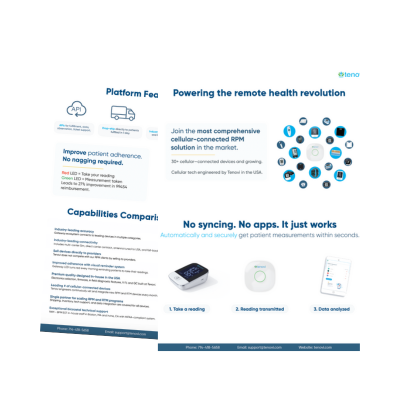Remote patient engagement is fundamental to the success of remote monitoring programs. It is also the foundation of effective chronic disease management. With remote monitoring, Medicare requires patients to submit at least 16 days of measurements each month for providers to be reimbursed. But the value extends well beyond payment. When patients consistently take measurements, physicians have timely data to identify concerns early, intervene quickly, and ultimately reduce avoidable hospitalizations and costs.
This article examines how remote patient engagement can improve care by giving providers actionable data that helps health systems achieve stronger outcomes and lower costs.
Remote Patient Engagement and the 16-Day Requirement
The 16-day rule ensures patients submit measurements regularly, and with this, engagement builds naturally. Each data point recorded is an active step a patient takes to manage their condition. For physicians, this steady health data makes patterns clear. For instance, they can quickly see when blood pressure is creeping higher, glucose readings are staying too low, or weight is trending upward.
Instead of waiting for a scheduled appointment that may take weeks or even months, clinicians can adjust medications, provide counseling, or intervene before issues escalate. Research shows that remote monitoring programs are associated with reduced hospitalizations, readmissions, and healthcare costs, with patient engagement and adherence playing an important role in these outcomes.
How Engagement Strengthens Prevention
When engaged patients consistently track their health, they create a feedback loop that reinforces positive behavior. Every reminder to step on a scale, take a reading, or check a glucose level becomes part of a daily routine. Over time, this forms healthier habits that lower risk and help work to stabilize chronic conditions.
Clinicians benefit too because remote patient engagement provides them with a clearer picture of progress, setbacks, and outliers. Instead of reactive care after a complication, they can make preventive changes early. That shift from late intervention to early action is one of the most measurable benefits of strong engagement.
Tools That Support Remote Patient Engagement
Technology plays a critical role in keeping patients engaged. Devices that are easy to use, automatically transmit readings, and include reminder systems help patients stick to routines. Simplicity matters as well. When devices remove friction, engagement levels can rise.
Studies highlight that remote patient engagement improves when devices reduce manual steps and when support staff check in regularly. Whether through automated reminders, texts, or quick calls from care teams, patients are more likely to stay on track when the process feels effortless. In one study, researchers found that cardiovascular patients were significantly more likely to adopt remote monitoring when they perceived the technology as easy to use and accessible through familiar tools.
The Impact of Patient Engagement on Health and Cost
Remote patient engagement is meant to keep patients healthier for longer. By empowering patients to actively participate in their care, providers lower the chance of hospitalization, avoid costly complications, and improve outcomes. Medicare’s reimbursement model encourages engagement because it is required. For health systems, the return is twofold: improved quality scores and reduced spending. For patients, the benefit is fewer ER visits, better day-to-day management, and a greater sense of control over their own health.




